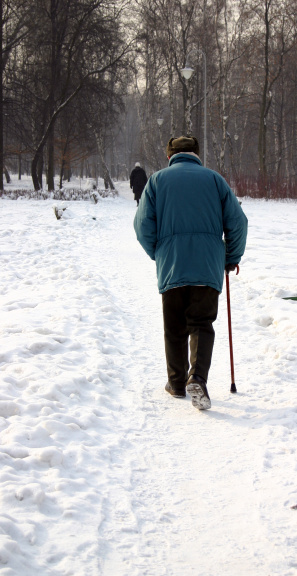
When it comes to joint stiffness, most people with arthritis have come to dread the winter months. The pain, swelling and stiffness often get worse, and doctors report more patient complaints during the season.
Advertisement
Winter’s official first day is Dec. 21, making Christmas a flag day for the long stretch of painful arthritis to come.
But why do symptoms rage when the temperature drops? Is there fact behind knowing by your knees that a storm is on its way? Research is not definitive, but there are theories.
One study, published in the Annals of the Rheumatic Diseases journal in 1990, did confirm the correlation between swelling in the joints and weather conditions.
Study researchers examined 62 patients with one of four similar conditions: rheumatic arthritis, osteoarthritis, joint pain caused by fibromyalgia and inflammatory arthritis, over the course of a month. They found that women tend to have more sensitive joints than men; rheumatoid arthritis and fibromyalgia patients were affected by barometric pressure, and osteoarthritis patients were affected by barometric pressure, rain and temperature.
RELATED READING: Natural Pain Reliever Gets To The Root Of Arthritis
Increased Joint Stiffness Affected By The Weather
Barometric pressure: Some experts attribute joint pain and stiffness in cold weather to the air pressure, commonly referred to as barometric pressure. A drop in barometric pressure, which usually accompanies cooler, damper weather and precedes a storm system, could allow tissues in joints to swell and put pressure on the nerves that control pain signals.
Robert Jamison, professor at Harvard Medical School and chief psychologist at the Pain Management Center at Brigham and Women’s Hospital, Chestnut Hill, studied patients with chronic pain to test the weather-pain connection. He found that 67.9 percent of the people surveyed indicated that they were sure changes in the weather had an effect on their pain. Most reported that they can feel a change in their pain before rain or cold weather occur, which Jamison attributes to the drop in barometric pressure.
Nerve sensitivity: Another theory is cooler weather triggers changes in the human body that lead to more sensitive nerves. The sympathetic nervous system, which is connected to the brain, ensures that the body keeps running.
In winter, the cold weather causes the sympathetic nervous system to constrict the blood vessels, ensuring that as little heat is lost as possible. However, when these nerves are activated by the cold, they are much more sensitive to the pain sensations in your joints. While they work to protect your body from the cold, they “overreact” to the pain caused by the arthritis.
RELATED READING: 5 Natural Remedies For Joint Pain
Finding Pain Relief Despite The Chill
Regardless of what is causing joint stiffness and pain, exercise can help with pain relief.
What type of exercise? All of them:
*Aerobic activities, such as brisk walking with arms pumping or dancing in your living room, get the blood flowing and warm up the body, as well as release endorphins that help to block out pain signals.
*Muscle-strengthening activities, though only mild forms of the exercise, will strengthen the muscles around painful and stiff joints.
*Balance activities help those with stability problems associated with their chronic disorders.
*Flexibility activities, such as yoga and stretching, increase the mobility in the joint while providing pain relief and reducing joint stiffness.
Advertisement
While our instinct in winter is to hibernate indoors, exercise indoors or out will help alleviate symptoms and improve our outlook, which is also linked to better pain management.
And dress for the weather. We lose most of our body heat through our extremities, so hats, mitts and warm boots are cold-weather musts. Wear layered clothing when you go outdoors, because the layers help trap body heat.
Embrace the season! Cross-country skiing in the woods, skating on an outdoor rink or building a snowman in your yard might be just the fix you’re looking for.
